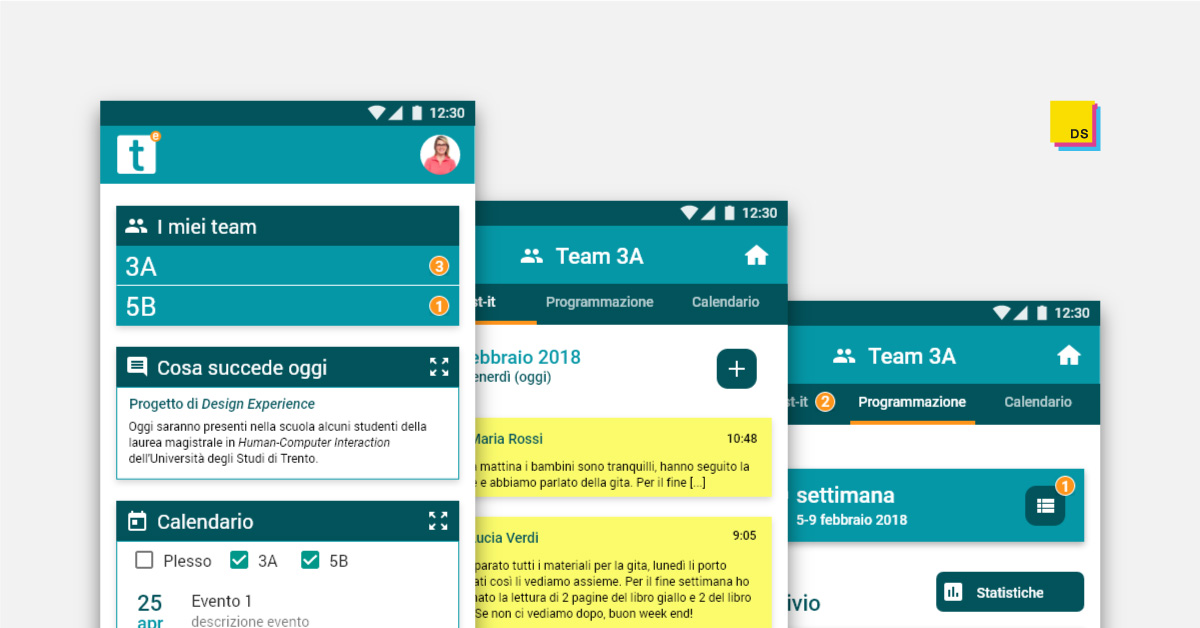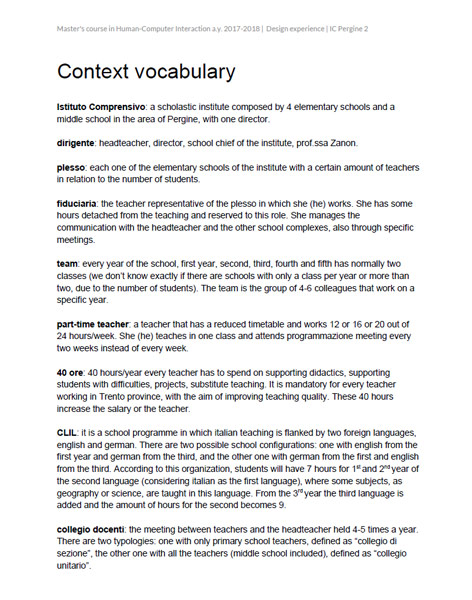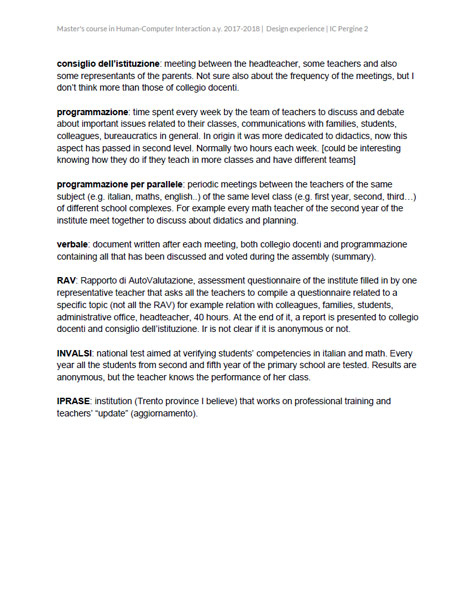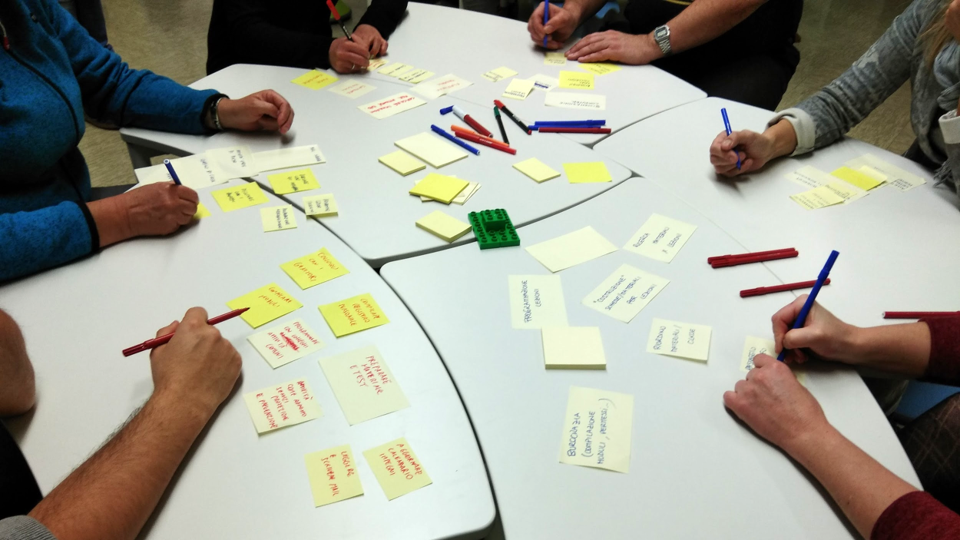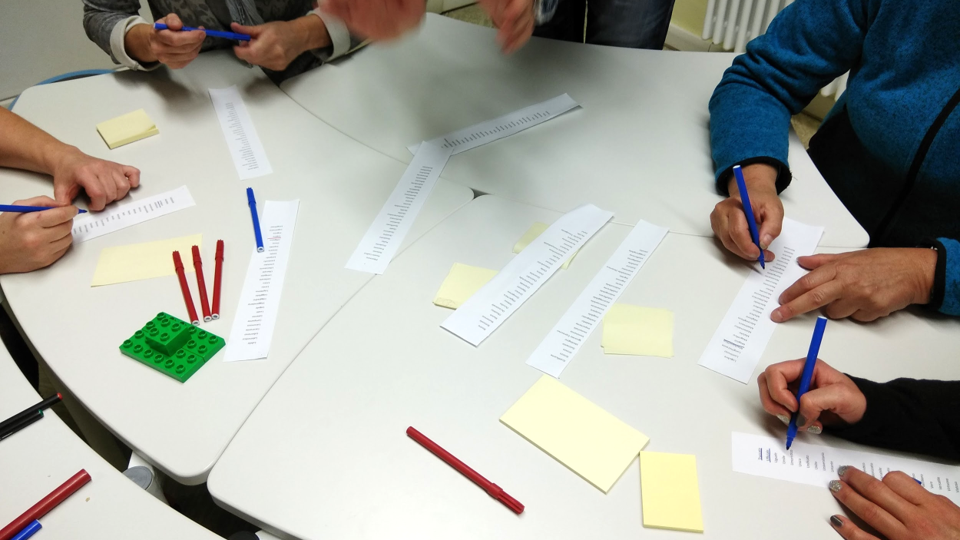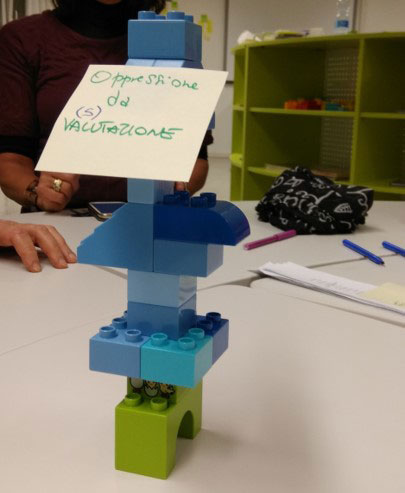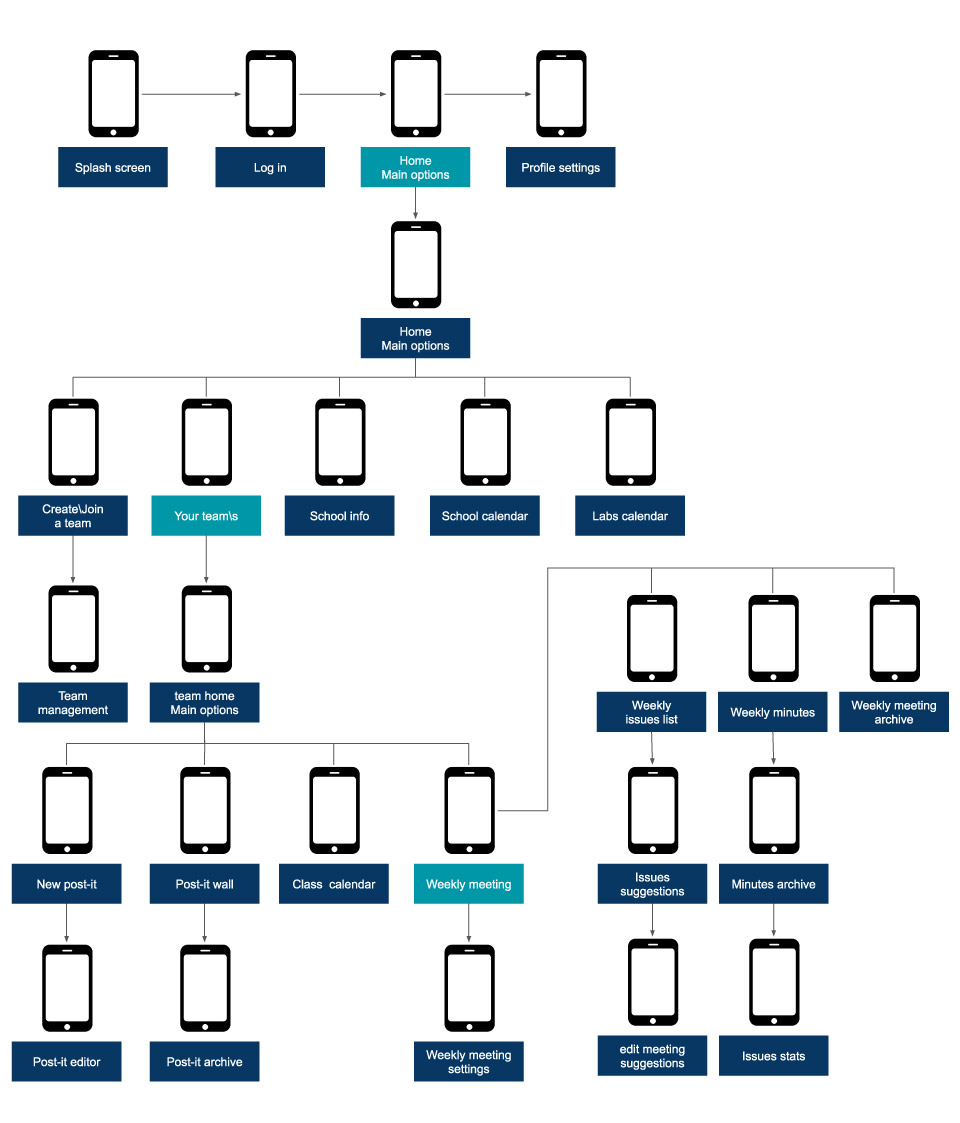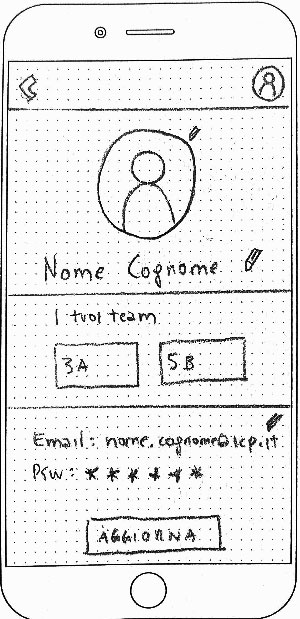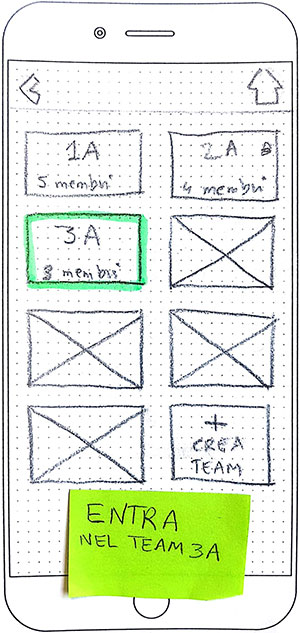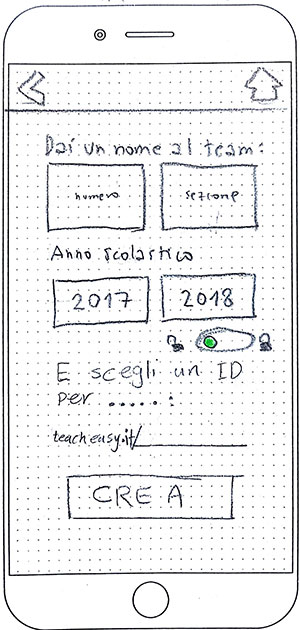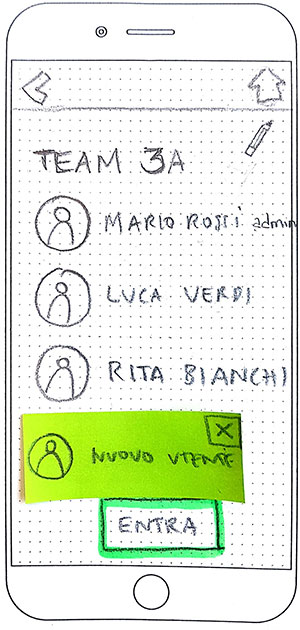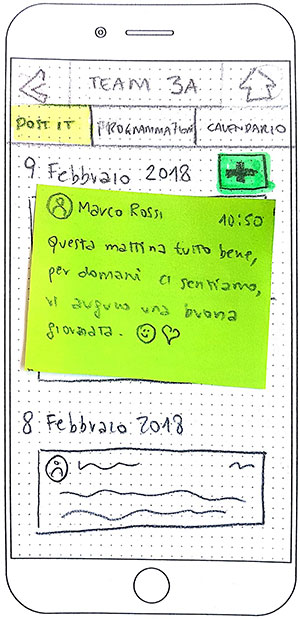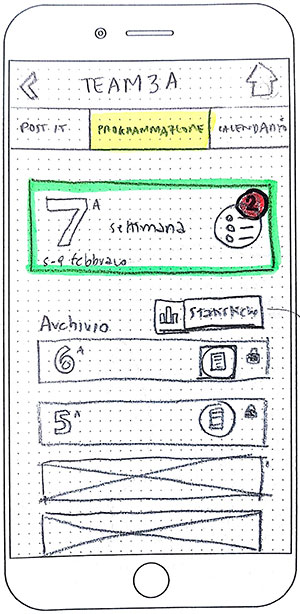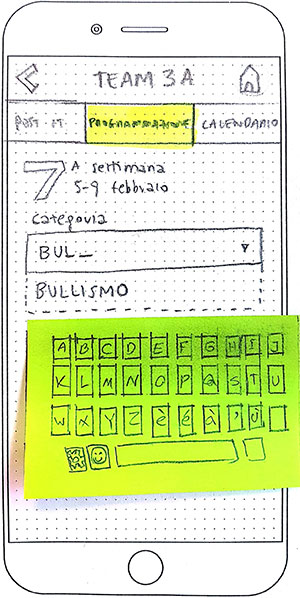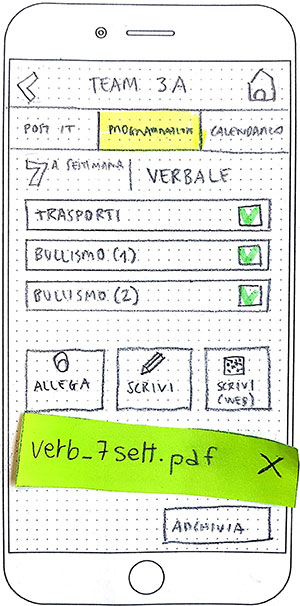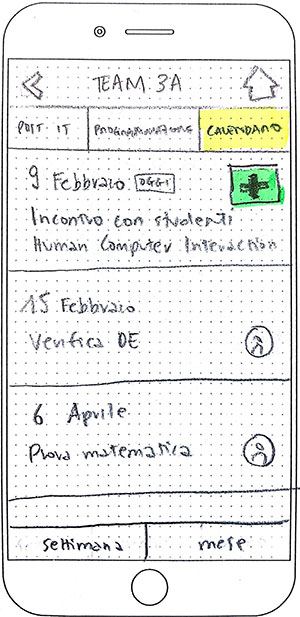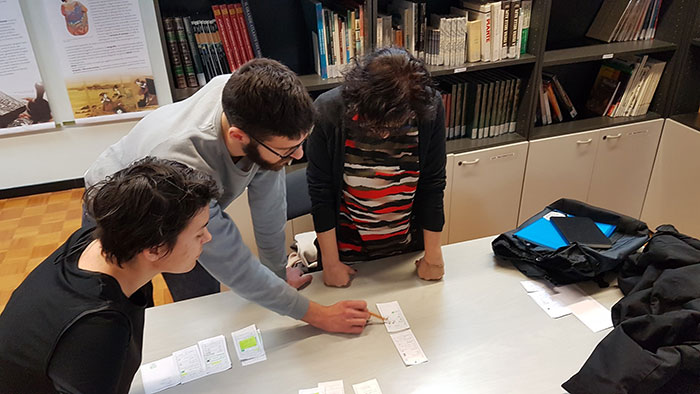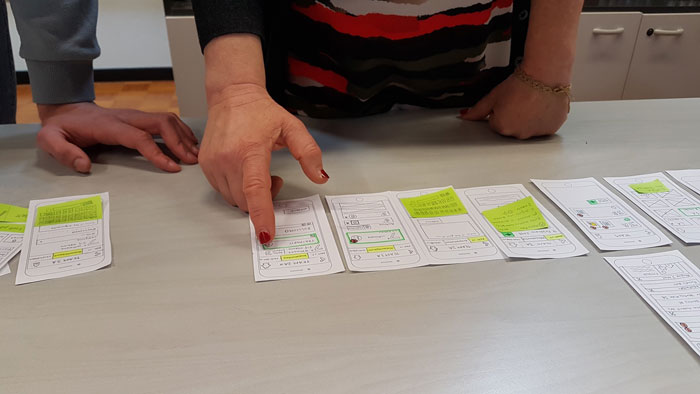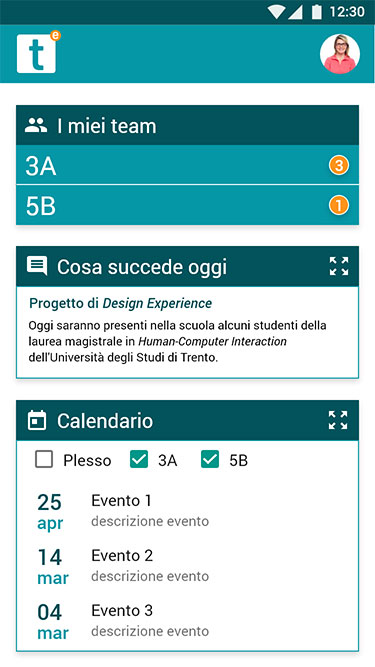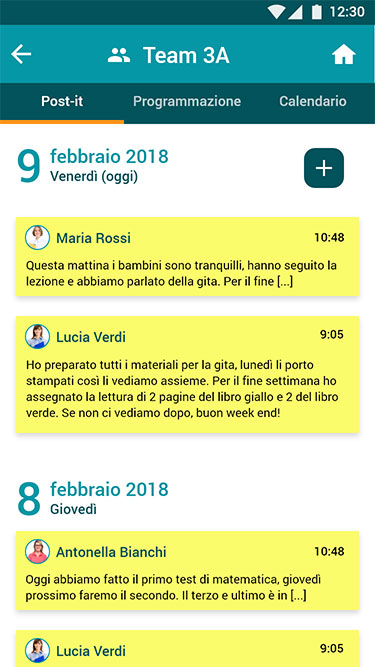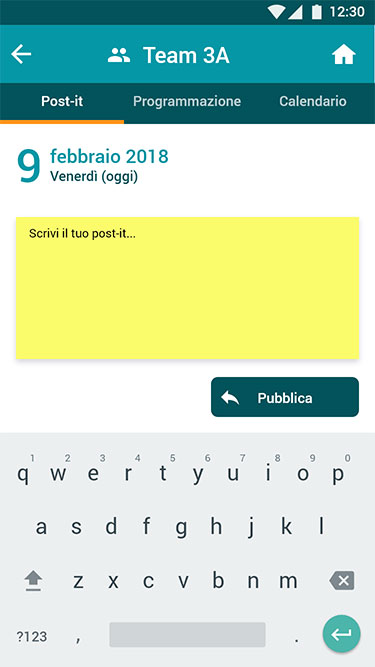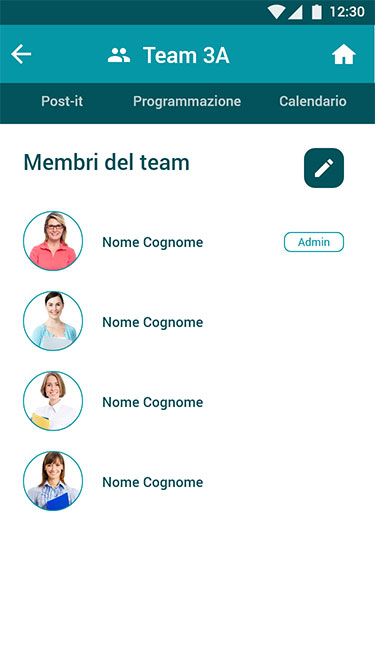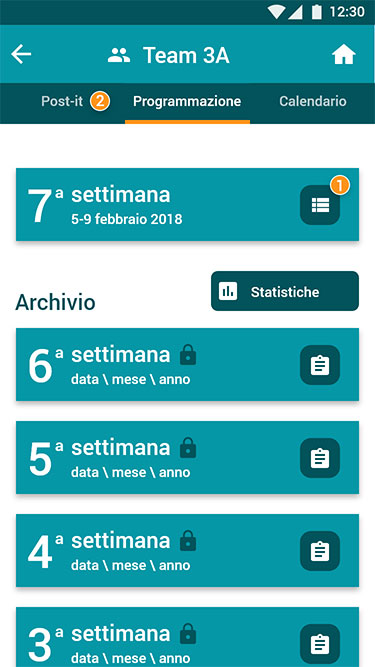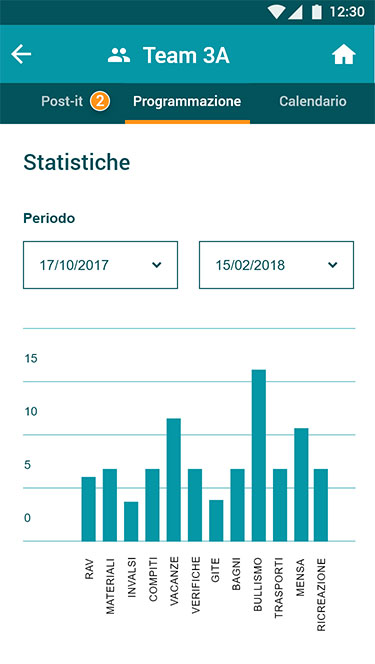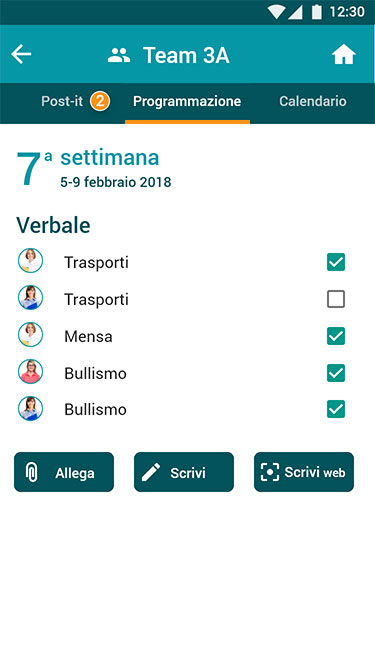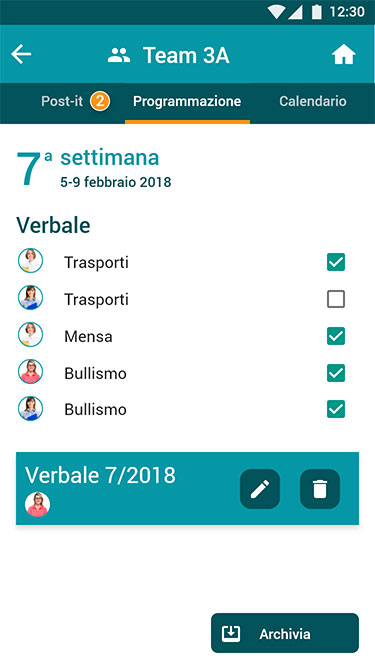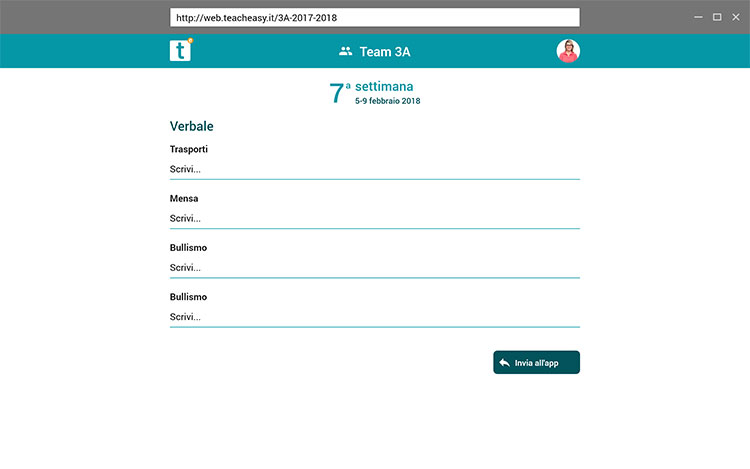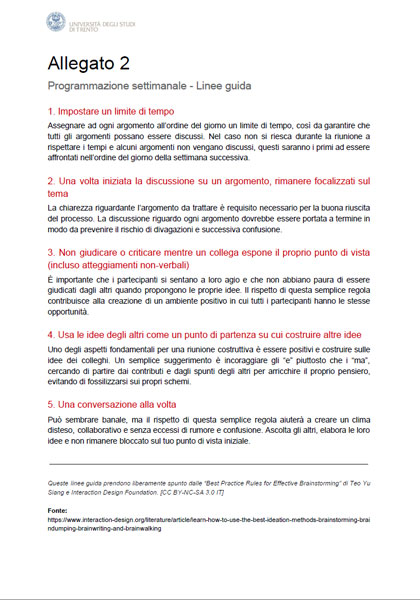TEACHEASY APP
Context
- Master’s Degree in HCI,
“Design experience” course, final project - Group project (6 people)
IN A NUTSHELL
With the aim to design a tool that could help teachers in their everyday work, we collected data through interviews and a workshop to understand the school environment and teachers’ needs.
Starting from the data we designed the Teacheasy app and a paper prototype that we evaluated with the users. Once validated the structure and the functionalities of the app we created the Teacheasy interactive prototype and, finally, two paper tools for a scenario without the app.
IN DETAIL
THE PROJECT

Teacheasy is the final project of the “Design experience” course (“Participatory Design” module + “User Centered Design” module) of the Masters’ degree in Human-Computer Interaction of the University of Trento.
The aim of the project was understanding the school environment, in particular teachers’ needs and issues, by involving them in a participatory process, to design a tool that could help them in their everyday work. The activities within the school “Istituto Comprensivo Pergine 2” have been coordinated with the director of the Institute and involved sixteen teachers.
The project was divided into two main phases: [1] Data collection and [2] Teacheasy ideation. Data collection included four interviews (November 2017) and a workshop with 12 teachers (January 2018). Teacheasy ideation included: the design of the structure and the functionalities of the app, the creation of the paper prototype, the evaluation with the users of the paper prototype, and the creation of the interactive prototype.
DATA COLLECTION – INTERVIEWS
Understanding the context with 4 teachers

The issues addressed during the interviews with 4 teachers mainly concern six different areas: (1) bureaucracy, (2) communication, (3) weekly programming, (4) technology, (5) RAV and (6) INVALSI. The main considerations that emerged are summarized through teachers’ quotes.
DATA COLLECTION – WORKSHOP
Eliciting information with 12 teachers and 5 tailored activities

The workshop, with five activities, involved 12 teachers and it was held at the “Scuola Primaria Rodari”. For each activity are reported: the typology (e.g. individual or group activity), the description, and the results (when present). The teachers were randomly divided into two groups, a “yellow” group, and a “green” group.
ACTIVITY 1. ICE BREAKING
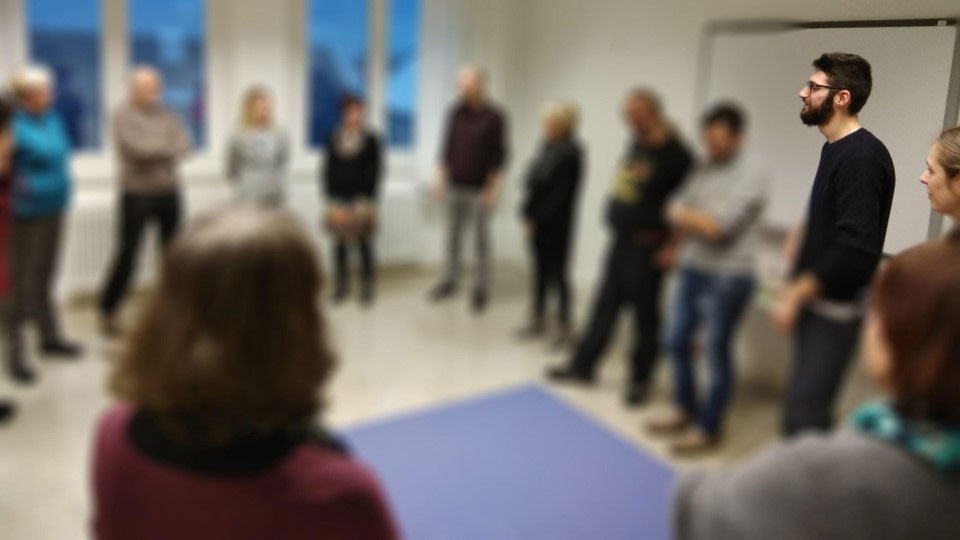
TYPOLOGY
All together (teachers + facilitators).
DESCRIPTION
Round name activity in which a person has to repeat all the names of the people before him/her.
ACTIVITY 3. TEACHERS’ OUTSIDE THE CLASS ACTIVITIES
ACTIVITY 4. WEEKLY MEETING
ACTIVITY 5. RAV + INVALSI
TEACHEASY IDEATION – DESIGN
From data to the ideation of the Teachesy app structure and functionalities
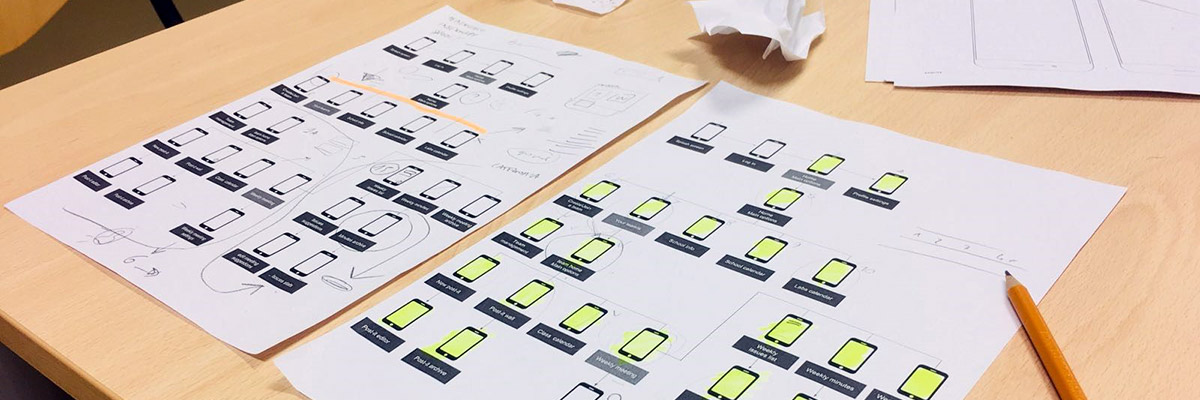
Starting from the information collected and analysed, both from the interviews and from the workshop, we developed the structure of a mobile application. The application is called Teacheasy, as its goal is to support the teachers’ work, trying to intervene in the most problematic aspects that can be addressed using a mobile device.
The app focuses on two key concepts of “team” and “weekly meeting”, to make communication between teachers easier, to help prioritize topics on the “weekly meeting” and to facilitate the drafting of minutes.
ANALOG TOOLS
Paper tools for a scenario without the app
Considering that the app would not have been implemented at the end of the project, we created a scenario, without the app, in which two paper tools to be printed and concretely used by teachers are proposed.


